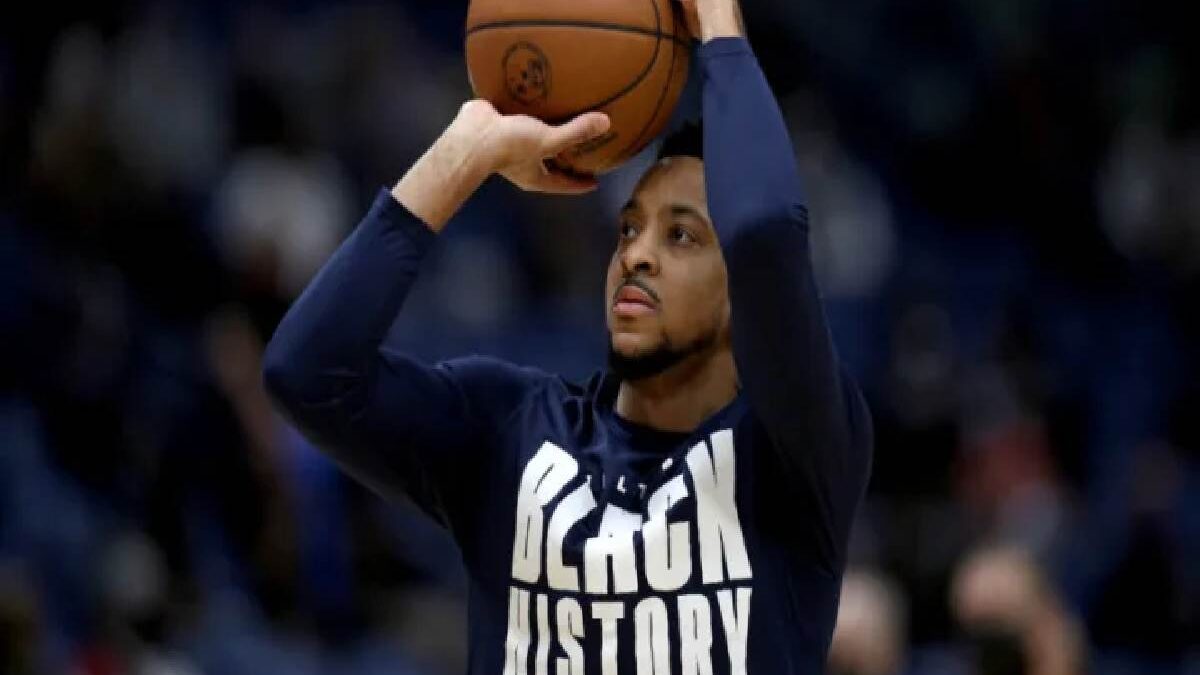Blazer Trade Too Ahead Of The Date, But Work To Transform The Line Is Just Beginning
Portland— The NBA’s trade deadline, which ends Thursday at noon, may have been the Trail Blazer’ trade last chance this season to make some big trades, but the work to transform their roster is far from done.
Sure, the Trail Blazer trade made three trades before the deadline, but those moves were just the first step in what could be a lengthy shakeup. The now-previous roster had its moments, marked by reaching the Western Conference Finals in 2019. Still, it was time for a different direction after back-to-back first-round eliminations and a poor start to the 2021-22 season.
“It was clear to us that the roster was at an impasse,” said Joe Cronin, interim general manager of the Trail Blazer trade. “It was a team that adapted to a specific coaching style, and playing style that we felt was not conducive to the way Chauncey and I wanted to play. So that was the end; we were looking at a team that would have been in the luxury tax for $15 million next season and didn’t have a lot of opportunities to improve.
“So we decided to undertake a radical reorganization. Our goal was to close several deals, balance the list, create many tools and exceptions, and significantly increase our ceiling to generate deals.”
First, he sent Norman Powell and Robert Covington to the Clippers or Eric Bledsoe, Justice Winslow, Keon Johnson, and a second-round pick in exchange for a deal that, at least in the short term, was more about losing pay than winning matches.
Table of Contents
The Deal Of Blazer Trade
“The deal was important to us because it exempted us from the luxury tax this year, which completely reset our snooze clock, meaning we won’t be returning even if we’re on the tax in future seasons. Until at least 2025,” Cronin said. “The trade also gave us a lot of leverage in the following deals that we had to do where teams would no longer refrain from trying to get us out of the luxury tax as part of the negotiations. So that was a decent deal for us.
History Of Blazer Trade
Then came the big shot: Portland sent CJ McCollum, Larry Nance Jr., besides besides a pair of those. Future second-round picks.
“We have a player we like in Josh Hart and some good young players, including one who is still here, Didi Loudaza,” Cronin said. We made a first-round pick that has a chance of becoming a lottery pick, and some second-rounders created a massive $21 million trade exception and more than filled our books this season and beyond.
They eventually sent two of the Pelicans’ trade-acquired players, Alexander-Walker and Satoransky, in a three-team trade that hit Joe Ingles, who is out for the season and the final year of his current contract. , Elijah. Hughes and a second-round pick.
“We acquired Joe Ingles, a player we like and appreciate the rights to Bird, and Elijah Hughes, a nice young prospect,” Cronin said. “I also have another option for the second round. The deal also gave us $5 million off our books next season, which was one of our goals and a pervasive theme across all of our trades. So: fill our books for next season.”
All about THREE traders
So with those three trades, Cronin gave the Trail Blazer trade a lot more options going into the 2022 offseason than he did a week ago. Of course, these weren’t the only deals they wanted to make, but they were the only deals they felt committed. And while those deals certainly won’t materialize in the next few months after the deadline, those talks may lead to something once business picks up.
“We did our due industry, made a bunch of different calls, made a few offers, and this time nothing worked out,” Cronin said. “We will return to some of these teams, and other opportunities will arise in the meantime.”
Although they haven’t returned the level of talent they sent over the past week, the Trail Blazer trade are setting the stage for their goal of building a roster capable of fighting for a championship. But Cronin admits taking the pay and getting tools as extra draft picks and trade exceptions are easy.
All About Traders
“All of these trades over the last, say, ten days have been focused on next season’s roster,” Cronin said. “Our intention is: what does next season’s squad look like? We think it will be much more balanced.
Now begins the hard work of finding that positional balance, managing the salary cap, finding viable trades that will improve the team while maintaining some degree of flexibility, and making the good draft picks and undoubted free agents. to play in Portland.
“When I chief got this job, Jody Allen dared us to create a competitive roster, which was the finest and most expedient way to do it,” Cronin said. “We can be a cap space team, and we can be a stellar business team, we can be a mid-tier team. We have plenty of opportunities to attract top talent, especially players who can win above the middle tier. So we feel in an excellent position to build a roster that fits the way Chauncey wants to play, to make an identity here where we defend and play together, very similar to the team we’ve seen have (against the Lakers).
“Now we have a bit of a clean slate, we’ve worked a lot over the last few weeks, and it’s much easier to tear down than build. So our challenge now is to build it.

